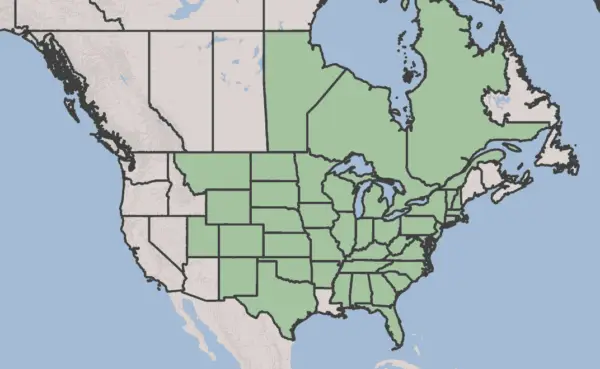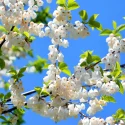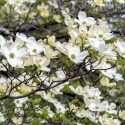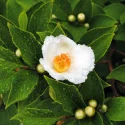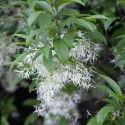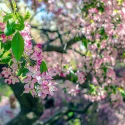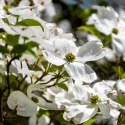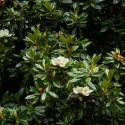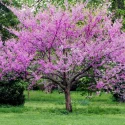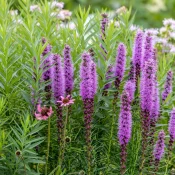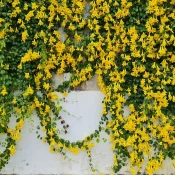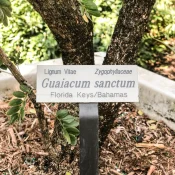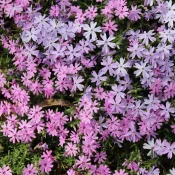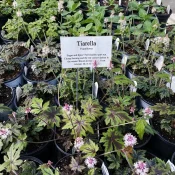Hackberry
Want to help butterflies and birds for generations with minimal effort? Plant a Hackberry. Hackberries are fast-growing trees that can reach up to 75 feet or more and live for 200 years. They are also the host plants for many butterflies. Hackberries are drama-free thanks to their ability to grow in a wide range of conditions: clay, sand, or humus-rich are all fine. Their tiny cherry-like fruits are edible to humans and a delight for birds, but they may not be worth the effort (scroll on to find out why). Plant them for future generations of people, butterflies, and birds.
- Full Sun, Part Sun
- Tall Tree (50-100'+)
- Spring flowers
- Host Plant
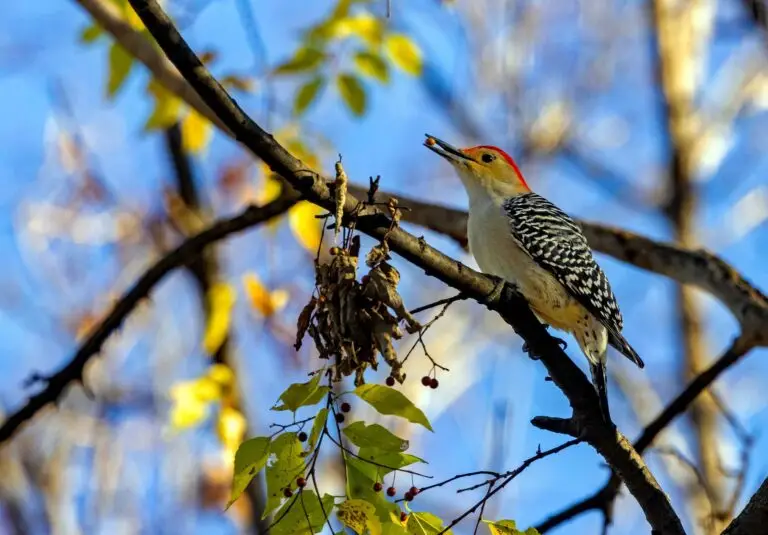
Hackberries are beautiful and generous native trees, which is one reason we’ve included them in our Best Native Trees for Front Yards and Best Native Plants for Birds round-ups.
This tree helps birds and butterflies and thrives almost anywhere with minimal help. So it’s also a bummer that its name may be standing in the way of its becoming better known. (Think naming doesn’t matter? Just look at how “butterfly bush” has duped millions into planting an invasive species in their yards.)
Let’s start with the backstory of its terrible name, then dive into planting tips.
Why is it called Hackberry?
Wow. “Hackberry.” You have to wonder how popular this tree would be if it were called ‘Birdsong Tree’ or ‘Butterfly Nursery Tree.’
“Hackberry” comes from the old Scottish word “Hagberry,” which means “bird cherry.” Which is exactly what this tree should be called. Bird Cherry is the perfect name for this beautiful tree, thanks to its tiny cherries, which are bird favorites.
Fortunately, common names are given by the generations before, so we can all find a way to change Hackberry to something that does this incredible tree more justice—Bird Cherry gets our vote. To ensure you’re getting the right tree, look for the Latin name Celtis occidentalis (each species of plants only have ONE Latin name, which is why they were created in the first place.)
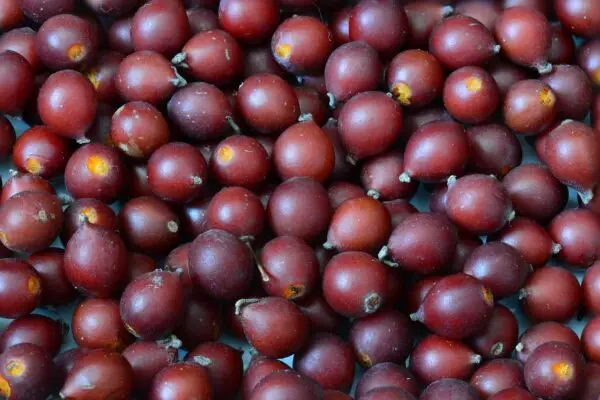
Are Hackberry fruit edible?
YES! Hackberry fruit is edible for humans—and birds and wildlife, too.
Some describe the taste as being like a date, or a tart cherry. Some say they taste disgusting. So what is the answer? As native gardening expert Carolyn Harstad said in her book Go Native, “You be the judge.” Try them for yourself in the summer.
Which butterflies use Hackberry as host plants?
Hackberries are essential trees for helping butterfly populations. They are the host plants for the Tawny Emperor, Mourning Cloak, Question Mark, and Hackberry butterflies. (Here’s a quick host plant overview if you’re wondering what it means.)
Hackberry trees help all these butterflies!
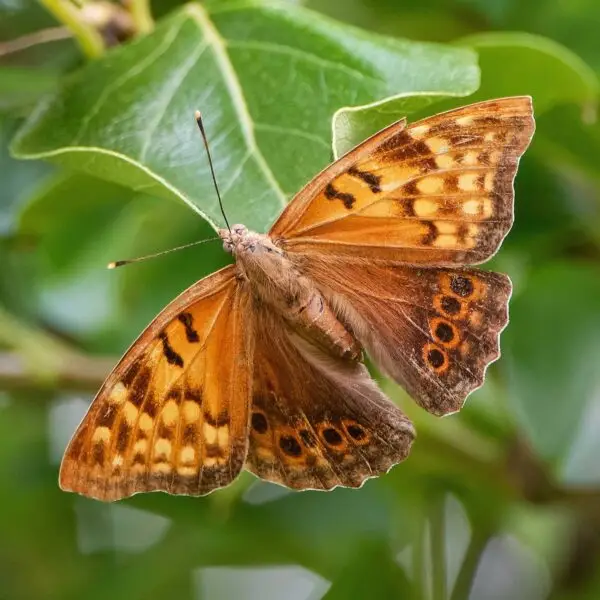
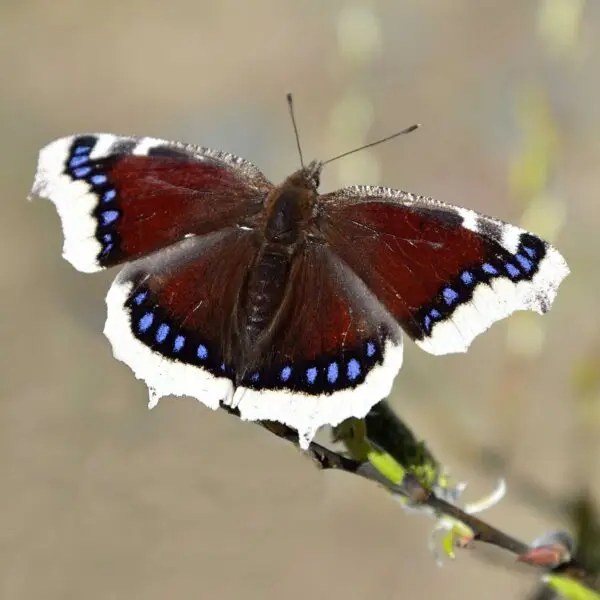
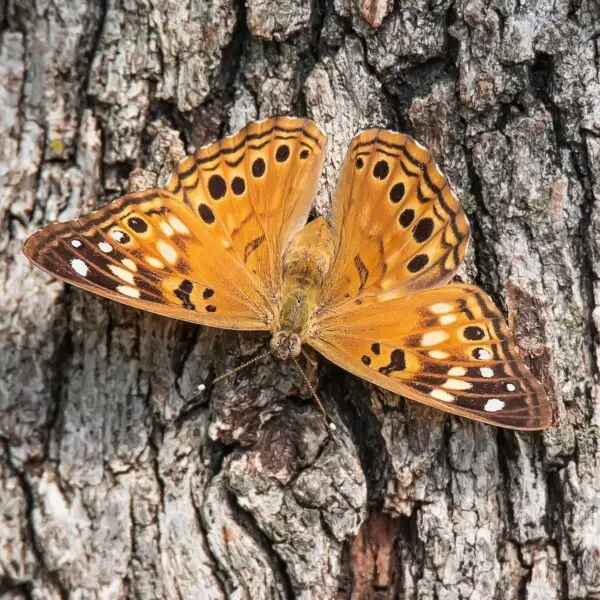
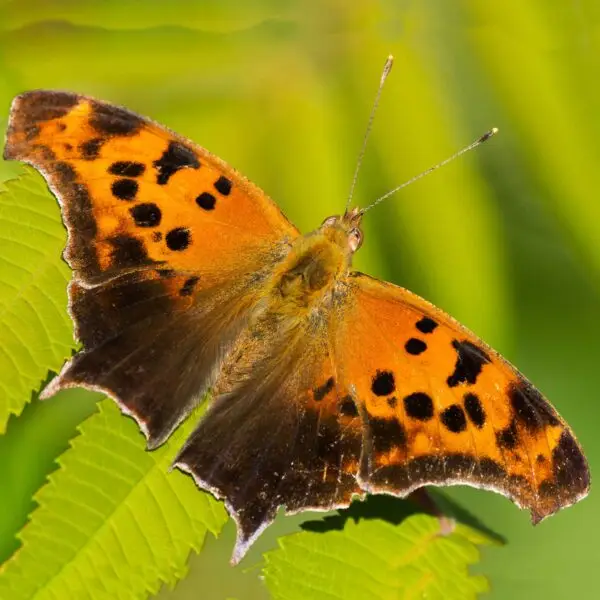
What is a host plant?
A host plant is a specific plant that a bug, butterfly, or caterpillar eats, lives on, or lays its eggs on.
How to grow Hackberry
Hackberries are a very easy tree to plant. Some native trees have a reputation for being hard to grow (I’m talking about you, Franklin trees) Hackberries are exactly the opposite: they are almost impossible to plant in the wrong spot.
Or, to quote the fantastic native gardener Carolyn Harstad again:
“Hackberry will accept nearly any growing condition.”
So there you go—plant away!
Hackberries thrive in so many types of soil
Even if you have clay soil, sandy soil, or rich black, nutrient-filled soil (sometimes called ‘loam’)—this tree will be happy.
If the area is mostly moist or consistently dry—it doesn’t matter. Hackberries thrive in a wide range of areas.
And lots of different sunlight, too
Hackberries are happy in full sun to part shade. The only situation that they dislike is full shade.
Where is Hackberry native?
Hackberries are native to 80% of the United States and more than half of Canada. Unless you live in western-most North America, you can plant a Hackberry.
What can I find a Hackberry tree to plant?
Now that you want a Hackberry, let’s set you up for success finding one. Sadly, most conventional nurseries do not stock this native tree (I know…it’s so silly how many non-native plants are better known.)
To make finding a Hackberry easier, here are four sourcing ideas:
Where can I find seeds and plants?
Finding native plants can be challenging (we partly blame Marie Antoinette.) To make it easier, we’ve assembled four sourcing ideas.
Native Nursery List
300+ native nurseries makes finding one a breeze
Online Native Plant Sellers
We've included 100+ online resources to help
Society Plant Sales
Every state has a native plant society; find yours
Online Communities
Local Facebook groups are a great plant source
Why not keep your garden expanding and plant some native shrubs and flowers alongside your Hackberry? Here are some pairing ideas…
What are good pairings for Hackberry trees?
There are so many amazing native shrubs, trees, and perennial flowers that pair beautifully with Hackberries. Some ideas include:
Native shrub pairings
Native flower pairings
To sum it all up: Hackberries offer so much goodness with minimum care. Spend a morning or afternoon planting this tree and help sustain butterflies, birds, and humans for the next 200+ years. Planting trees can sometimes seem daunting (what if we plant it in the wrong spot or soil?!?) If this sounds familiar, the easy-going nature of Hackberries ensures you’ll get it right. Try the berries for yourself before the birds eat them all in the summer, and take lots of pictures in the fall when the tree looks dipped in yellow paint. They are a beautiful tree for any Mid-Atlantic, Midwest, Northeast, or Southern garden. Read on about the Best Native Trees for Front Yards or the Best Native Plants for Birds to meet some other generous and beautiful native choices. Happy planting!
Sources
- Iowa State University Extention, Hackberry.
- Nelson, Gil. Best Native Plants for Southern Gardens: A Handbook for Gardeners, Homeowners, and Professionals, (2010).
- Harstad, Carolyn. Go Native! Gardening with Native Plants and Wildflowers in the Lower Midwest. (1999), 230-231.
- Wikipedia, Hackberry Butterfly (Asterocampa celtis).
